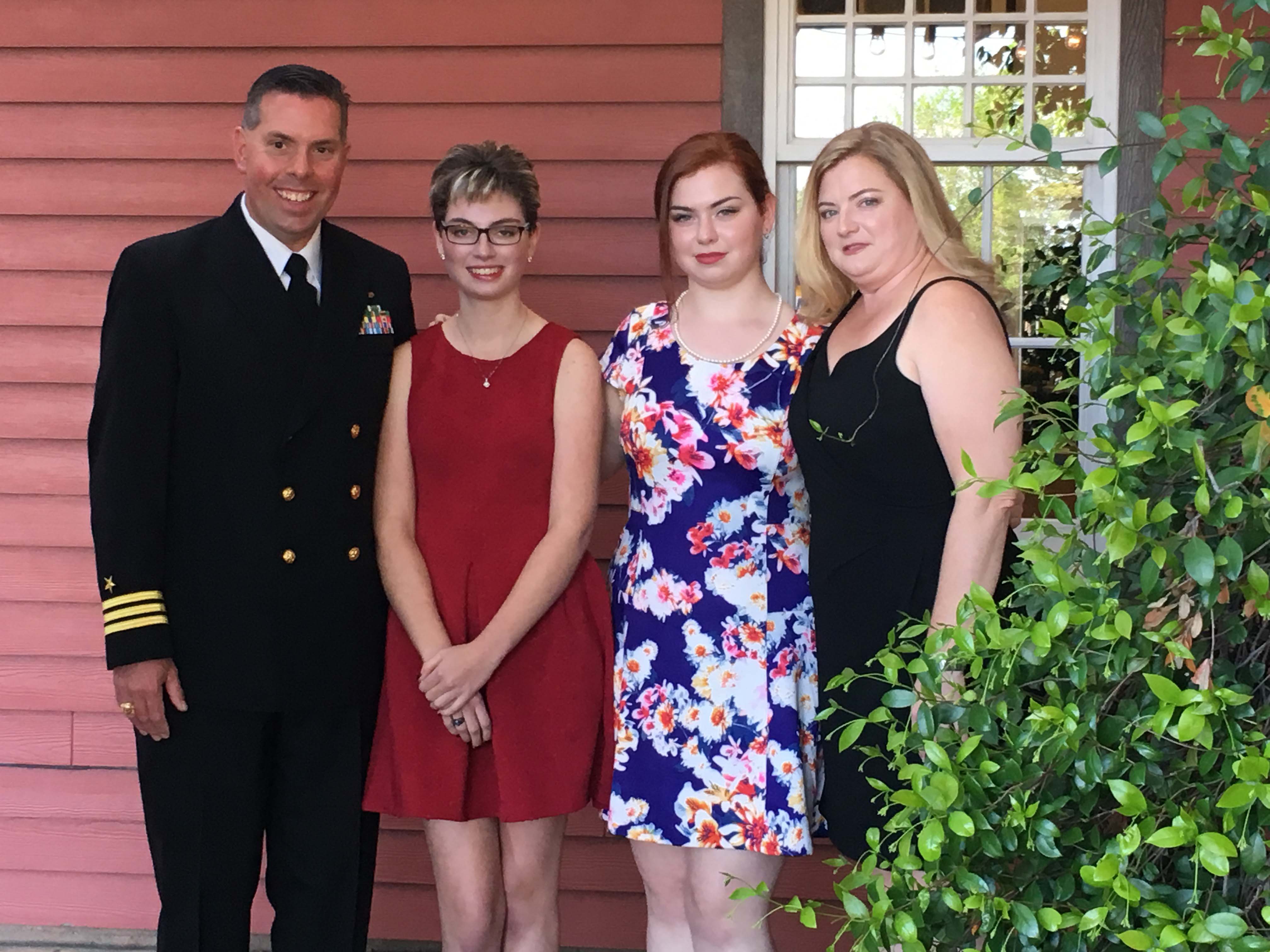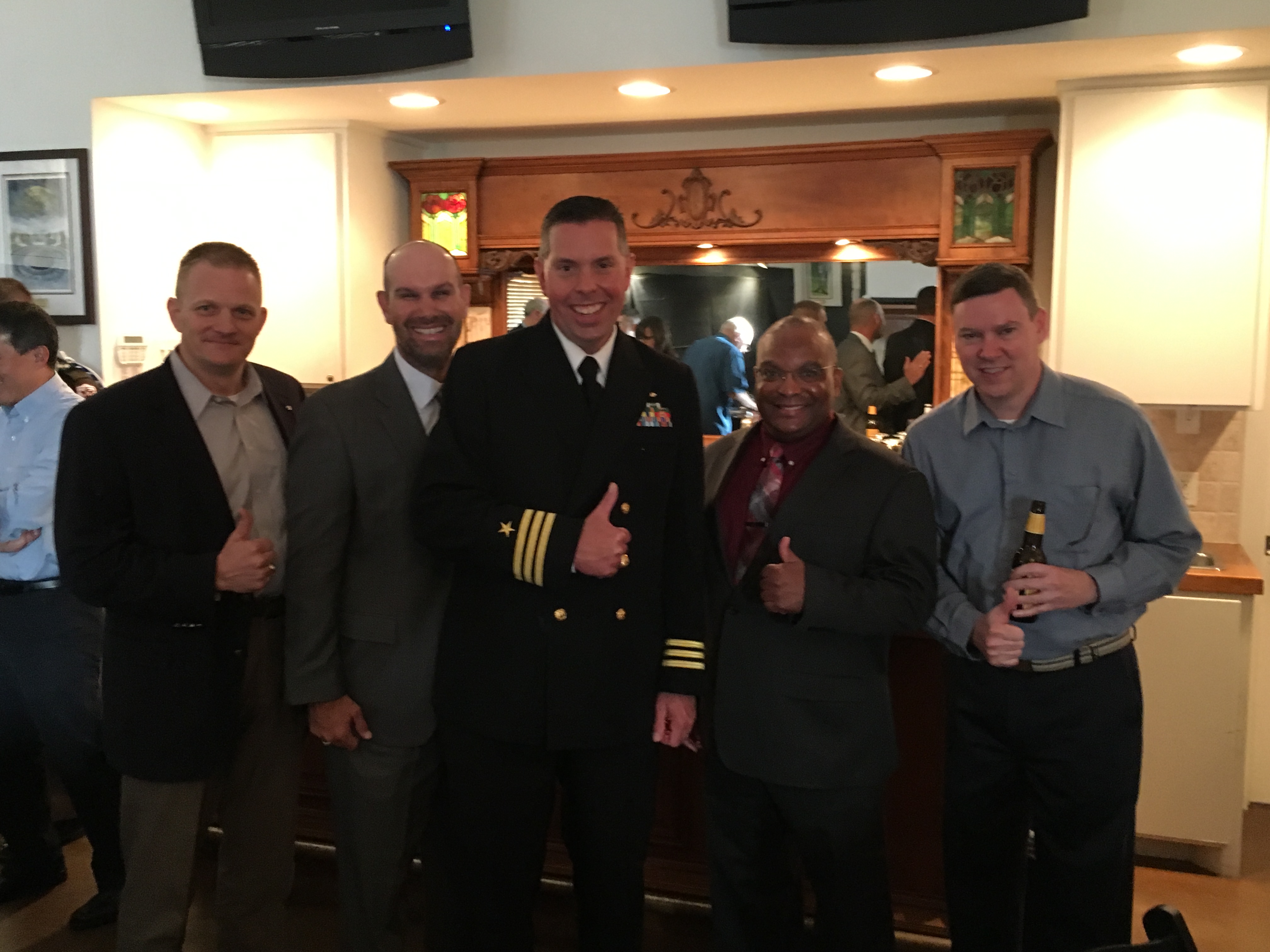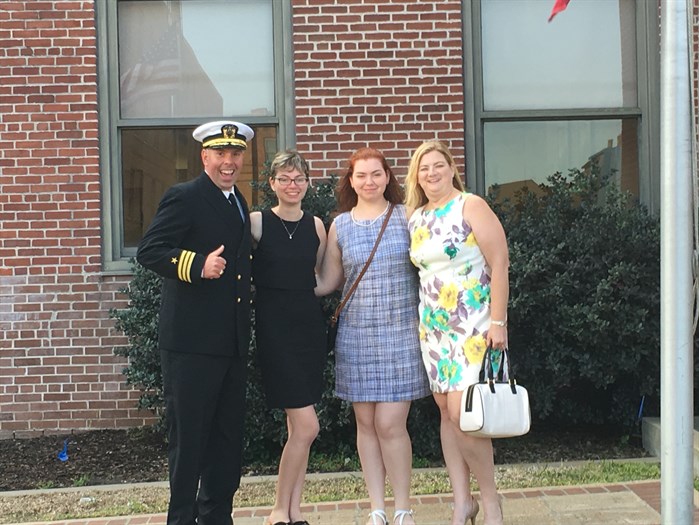
It was an eventful retirement for former Texas A&M University nuclear engineering student Patrick Pfanz ’93, who attended his retirement ceremony in College Station, Texas on March 25 after serving 21 years in the U.S. Navy as a nuclear submarine officer. The ceremony was as a tribute to Pfanz’s friends, family and supporters who helped him progress from Texas A&M through his naval career.
“This was very important to me because everything came full circle,” Pfanz said. “Seeing my professors, my shipmates, my buddies from the Corps of Cadets and the people I studied with as a student gave me the opportunity to give thanks to everyone who made an impact in my life.”
After graduating high school Pfanz knew he wanted to pursue an engineering degree and also had a desire to serve as a military officer, an interest that ultimately led him to Texas A&M and the Corps of Cadets, where he was a member of the Navy/Marine unit, Company P-2.
“I was looking for a good engineering school but what really tipped the scales for that was that I knew I really wanted to go into the military, so the ROTC [Reserve Officer Training Corps] program through the Corps of Cadets really was important to me,” Pfanz said.
When Pfanz began his education in 1989 he was inspired by Dr. Ron Hart, a former professor, to switch from aerospace engineering to nuclear engineering, where he entered the department as only one of eight students. He was granted a military commission through the Navy’s College Program and commissioned as an officer upon graduation in 1994. Pfanz then attended Naval Nuclear Power School, the Navy’s specialized nuclear school designed to take individuals from different technical backgrounds and make them proficient nuclear engineers in six months. Despite his formal education in nuclear engineering, according to Pfanz, there were certain aspects of the school that were still challenging.
“The Navy Nuclear Power Program is a short amount of time to teach someone without a nuke background what nuclear power is, how it is generated and its safety considerations,” Pfanz said. “For me, it was learning how the Navy wanted you to learn it, the specific Navy way of how they wanted me to learn or relearn some of the nuclear engineering concepts I had been taught.”

Following his term at Naval Nuclear Power School, Pfanz served in many capacities during his naval career. Pfanz began his career with the U.S.S. Batfish where he served as a damage control officer, later transitioning to Nuclear Power Training Unit (prototype) to serve as a shift engineer and command duty officer. After serving as a combat systems officer on the U.S.S. Providence and U.S.S. Alexandria, Pfanz and his family were eventually relocated to Japan where he served as the operations officer and submarine movement advisory authority manager for Submarine Group SEVEN.
“My family followed [me] like they did with every step of my career when we moved to Japan,” Pfanz said.”
After two years in Japan, Pfanz served as the Executive Officer of the U.S.S. Connecticut before becoming the Chief of Strategy, Contingency Plans and Assessments with Special Operations Command South.
Pfanz also had some personal difficulties during his career, including a time when he suffered an accident at sea while serving on the U.S.S. Providence. During poor weather conditions, the submarine was overtaken by an incoming wave and Pfanz was thrown against the vessel, breaking in place one of the vertebrae within his neck. In addition to these challenges, Pfanz also acknowledges the sacrifices his family has made to support his career.
“Being a submarine CO [commanding officer] was interesting to me, but I didn’t want my family to have to pay the greater commitment for that,” Pfanz said. “I wanted to retire and transition to a civilian career in the nuclear industry before my nuclear experience started to get stale [so] I applied to be a senior reactor operator at Florida Power and Light.”
Pfanz is currently transitioning into the commercial industry as a nuclear unit supervisor in training at Turkey Point in Homestead, Florida, where he will soon begin his senior reactor operator licensing class and become a nuclear unit supervisor for one of the two nuclear power plants at Turkey Point.
“My retirement ceremony served to honor my family for their sacrifice and to give back to the professors who are still there at Texas A&M,” Pfanz said. “I was glad I was able to say thank you in that way to all those who have helped me along the way.”
